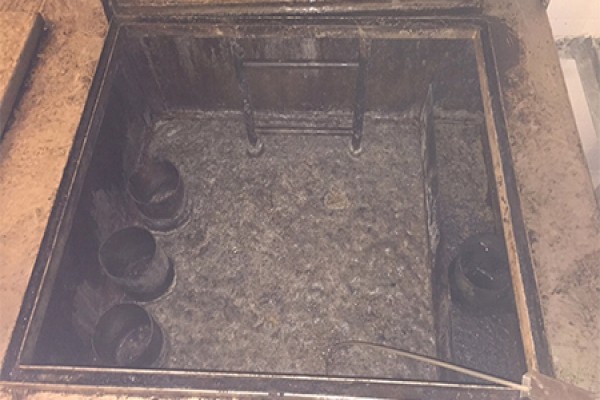Differences in deodorization treatment methods for wastewater pollutants
The composition of electroplating wastewater is very complex. In addition to cyanide containing (CN -) wastewater and acid-base wastewater, heavy metal wastewater is a potentially hazardous category of wastewater in the electroplating industry. According to the classification of heavy metal elements contained in heavy metal wastewater, it can generally be divided into wastewater containing chromium (Cr), nickel (Ni), cadmium (Cd), copper (Cu), zinc (Zn), gold (Au), and silver (Ag).
Adsorption is a useful method for removing heavy metal ions using the unique structure of adsorbents. The adsorbents used for treating electroplating heavy metal wastewater using adsorption method include activated carbon, humic acid, sepiolite, and polysaccharide resin. Activated carbon is commonly used in wastewater management due to its simple configuration, but its regeneration efficiency is low and it is difficult to meet the reuse requirements for water treatment. It is generally used for pre-treatment of electroplating wastewater.
deodorants By using plant extraction technology, useful ingredients are extracted from the roots, stems, leaves, flowers, and fruits of various plants. Under the action of radiation, the force is generated to improve the activity of plant fluids. It can quickly undergo chemical reactions such as polymerization, substitution, displacement, and adsorption with various harmful and odor molecules. The product is neutral and effective in removing waste gas, odor, and odor.
Using modified sepiolite to manage heavy metal wastewater for Pb2 Hg2 and Cd2 have good adsorption ability, and the heavy metal content in the treated wastewater is significantly lower than the comprehensive sewage discharge standard. There are also literature reports that montmorillonite is also an excellent clay mineral adsorbent. Aluminum zirconium pillared montmorillonite has a removal rate of 99% for Cr6 under acidic conditions, and the content of Cr6 in the effluent is lower than the discharge standard, which has practical application prospects.

The method of adding sulfide precipitants to generate heavy metal ions in wastewater and removing sulfide deposits. Compared with neutralization sedimentation method, the advantage of sulfide sedimentation method is that the solubility of heavy metal sulfides is lower than that of their hydroxides, and the pH value of the reaction is between 7-9. The treated wastewater generally does not need to be neutralized. The drawback of sulfide deposition method is that sulfide sediment particles are small and easy to form colloids; Sulfide sedimentary agents themselves remain in water and generate hydrogen sulfide gas when exposed to acid, resulting in secondary pollution.
In order to avoid secondary pollution, British scholars have developed an improved sulfide deposition method, which selectively adds sulfide ions and another heavy metal ion to the wastewater to be treated (the equilibrium concentration of sulfide ions in this heavy metal is higher than the equilibrium concentration of sulfides in the heavy metal pollutant to be removed). Due to the fact that sulfides of added heavy metals are more easily dissolved than sulfides of heavy metals in wastewater, the existing heavy metal ions in wastewater are separated first, avoiding the generation of harmful gases such as hydrogen sulfide and residual sulfide ions.
Cr in electroplating wastewater mainly exists in the form of Cr6 ions. Therefore, reducing agents are added to the wastewater to reduce Cr6 to slightly toxic Cr3 , and lime or NaOH is added to produce Cr (OH) 3 for sedimentation, separation, and removal. Chemical reduction method is one of the early management techniques for electroplating wastewater, which is widely used in China. Its management principle is simple, easy to operate, and can withstand the impact of large amounts and high concentrations of wastewater. According to the different addition of reducing agents, it can be divided into FeSO4 method NaHSO3 method, iron filings method SO2 method, etc.
The article originates from a deodorant manufacturer http://www.scneng.com.hk
-
06-11
"Environmental Doctor" Du Siyuan: Environmental Protection is a Lifestyle Attitude
There is a Hong Kong compatriot in Jiangmen who often frequents various farms and plantations, walks in mechanical factories, and is seen by others as the nemesis of environmental problems. He conside
-
03-16
Deodorant manufacturer: Deodorants reduce soil pollution
Waste is a chaotic mixture of various components. The accumulation of debris on the surface of soil can cause some chemical reactions, releasing harmful gases, which can lead to soil pollution and eve
-
12-01
Deodorant Manufacturers: Differences between Microbial Deodorants and Traditional Deodorants
The waste that is not needed in our daily life and work is called waste. Due to the large amount of waste discharged and the complex categories, there are great difficulties in reducing waste and deod
-
11-08
Application of Deodorant Manufacturers in Domestic Waste Treatment
Garbage is the waste generated in everyone's daily life and work. Due to its large discharge volume and complex and diverse composition, it poses great difficulties in reducing and deodorizing wa
